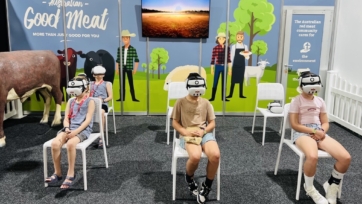Educational Buzzwords: What do they mean for your resources?
The Meanings Behind Educational Buzzwords and What They Mean for Your Resources
Just like every other industry, education has its own list of buzzwords that govern ‘best practice’ teaching and learning. Getting your head around these trends could improve the way you communicate with teachers, leading to increased engagement in your resources and school programs. Read on to decode the latest Education Buzzwords and how you can incorporate this new understanding into your school engagement strategy:
1. Remote Learning
A favourite of the last 18 months, remote learning is learning that happens outside of the classroom, most often, from students’ own homes. This is not a new concept; Australia’s School of the Air has been delivering educational programs through radio broadcast, mail correspondence or, more recently, virtual learning to some of the country’s most remote students since 1951!
2. Inclusion
Inclusive teaching means delivering content in a way that is accessible to all learners, no matter their background, ability, physical, social or emotional needs. This often means that class teachers will group learners with similar needs (as best they can) to deliver 4-5 ‘versions’ of a lesson they want to teach, with 4-5 corresponding outcomes based on the learner.
3. Flipped Classroom
A recent trend for best practice learning styles, the Flipped Classroom allows learners to reverse the traditional model of education, essentially engaging with key content and concepts at home (before the session) and then collaborating, clarifying and applying understanding of the content in-person. Educators feel that it is the interactivity and consistency of feedback that underpins the success of this approach to learning.
4. Interactive Resources
Interactivity is at the top of every teacher’s list when looking for the right resources to demonstrate a concept both in and outside of the classroom, but it can be tricky to understand, especially if you’re not familiar with what’s out there or the current tech-capabilities of schools. Some schools are lucky enough to have access to the all-singing, all-dancing interactivity of VR and AR, whereas some classrooms barely have working interactive whiteboards. To remedy this, we must go back to interactivity that everyone can access: think adding sounds, movement and responsiveness in platforms such as Powerpoint or Google Slides, or adding quizzes with platforms such as Sli.do or Kahoot!.
5. Self-paced learning
Many modern teachers have eschewed traditional ‘I-lecture-you-listen’ schooling in recent years for the more student-centred self-paced learning. Students are able to learn at a pace that suits their individual needs, with access to all relevant materials for completion of the course, project or activity, and the outcome is often a demonstration of the students’ understanding in the way that makes the most sense to them. For example, a student-centric, self-paced visual arts project may have some students responding with a painting while others may respond through sculpture, although both outcomes will demonstrate the students’ understanding of the required educational objectives.
How does this affect my classroom resources?
To better harness the power of modern educational trends such as the above, better communicate and connect with classroom teachers and help students to better engage with your key content, make sure your school programs and resources can do the following:
- Be non-classroom dependent: I.e. ensure students can access the key information and demonstrate their understanding of it from both the classroom and at home.
- Be accessible to all learners: Ensure your lesson content can be differentiated for all learners and any web-based resources are compliant with the latest version of WCAG (Web Content Accessibility Guidelines).
- Are flexible for teachers to deliver a variety of curriculum outcomes. Key messages that relate to more than one curriculum area are powerful and useful.
Next steps?
- Audit your existing resources and review in line with the above recommendations.
- Update or create new resources to support educators effectively.
Don’t have the time or expertise? Contact Kimberlin Education and let us help you ensure your education program is useful and relevant for all students and teachers today.




